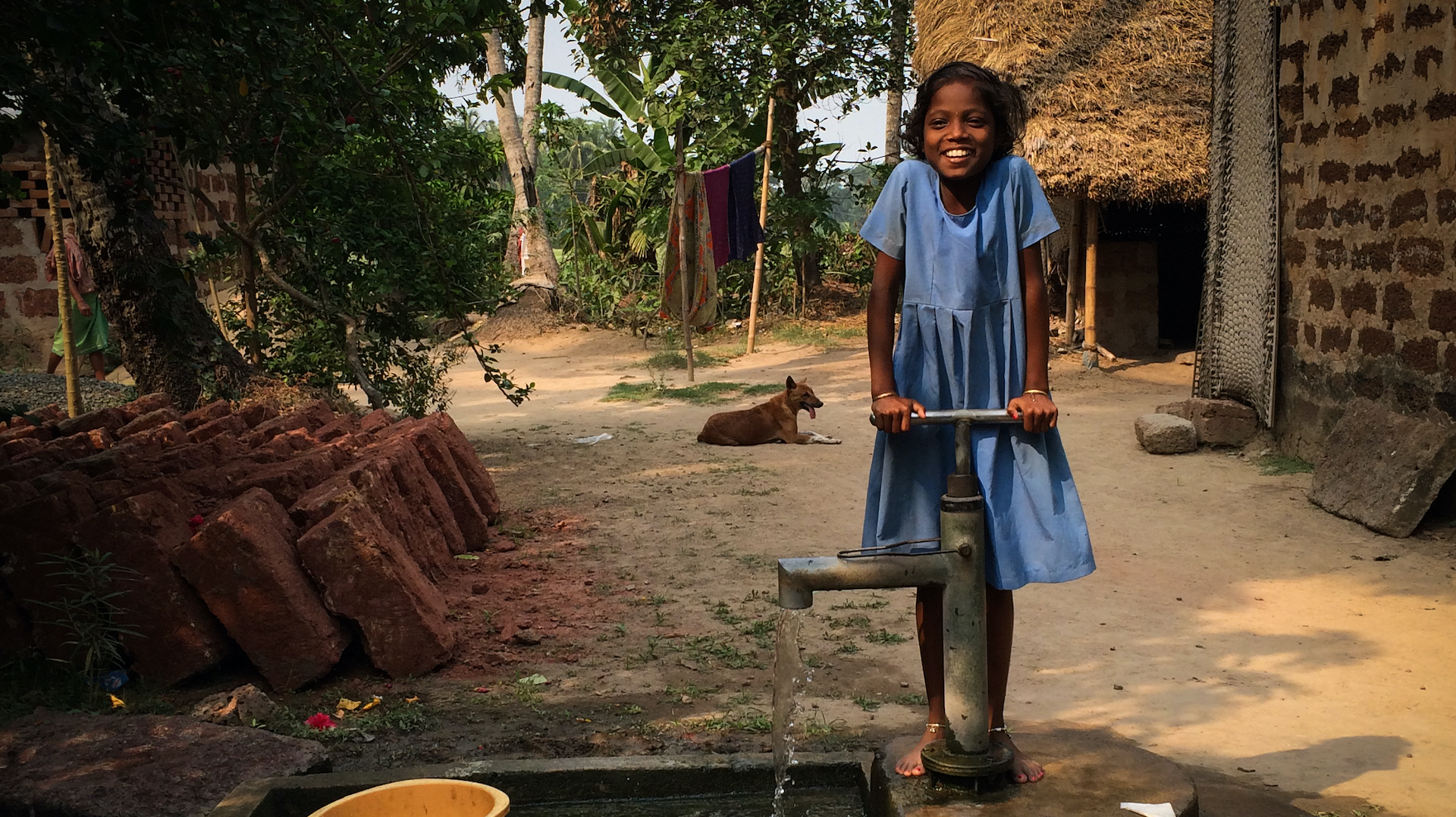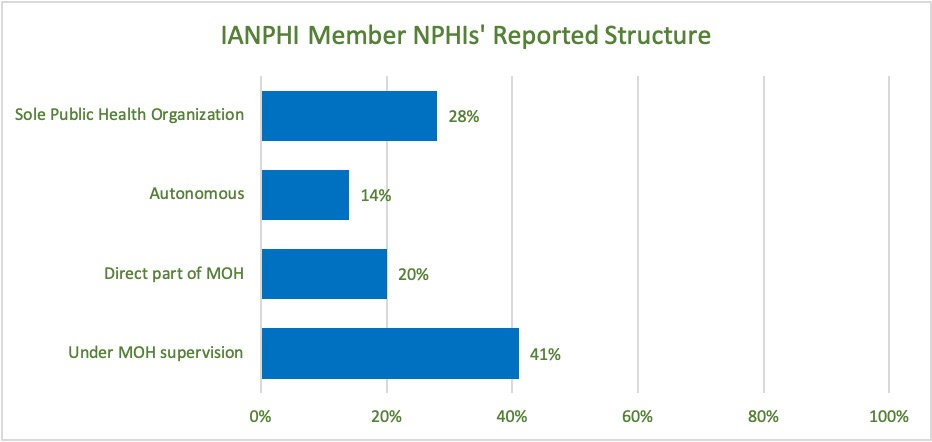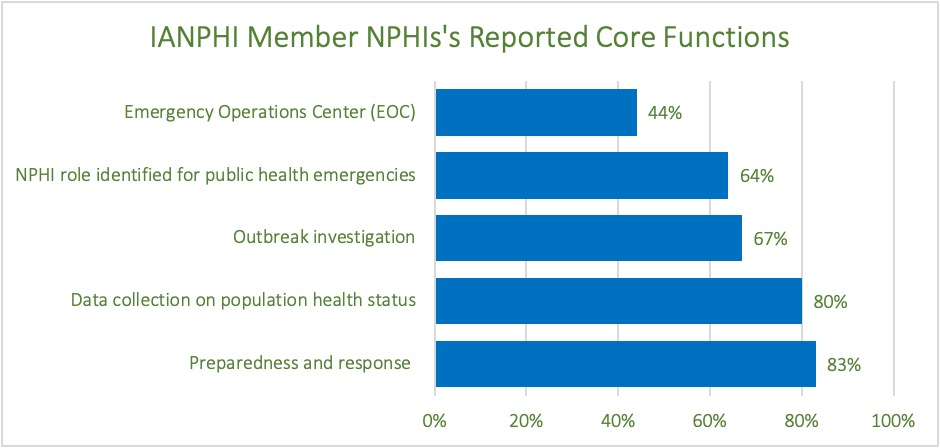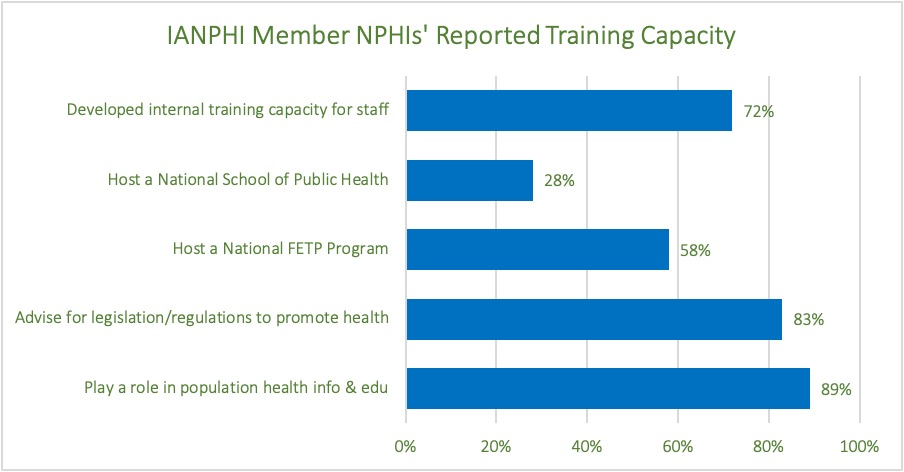IANPHI Survey Reveals Diversity of Membership, Highlights Financial Strain
IANPHI conducted a survey among its member national public health institutes (NPHI) between March and December 2019.

Previous surveys, held in 2013, 2008 and 2007, helped consolidate the definition of an NPHI and inform IANPHI’s publications. For this latest survey, the Secretariat collected the answers of 44 institutes out of the 110 IANPHI members – a 39% response rate. The findings are a reminder of the variety of NPHI profiles within the IANPHI membership.
NPHIs are organized in diverse, unique ways
The findings first offer insights into NPHIs’ internal organization, which is split between agencies under the supervision of the Ministry of Health (41%), structures that are directly part of the Ministry of Health (20%), and autonomous bodies authorized by the government with a governance separate from ministries (14%). A majority of NPHIs (72%) are however not the sole national organizations delivering core public health functions in their country. The workforce of those institutes varies widely from one full-time equivalent position to more than 12,000 (Brazil’s Fundaçao Oswaldo Cruz), with a median at 302 positions. Eighteen percent of NPHIs reported having more than a thousand full-time equivalent positions.

Most NPHIs say they lack the financial resources to carry out all of their core functions
NPHIs’ financial resources are also diverse, with over half of NPHIs stating they do not have adequate financial resources to carry out their core functions. The median value for their annual budget is 18 million USD, while the average value is 128 million USD. NPHIs’ budget come at least partially from their national government. Institutes generally do not rely (53%) – or in small part only (40%) – on fees for services provided, such as laboratory analysis for other agencies; nor do they get funding either from donors (63%) or the private sector (87%).
NPHIs are critical to national health policies
Looking at NPHIs’ core attributes, a large majority of IANPHI member institutes have a strategic plan and a national scope of influence; they develop policies and interventions that affect the country as a whole and address the country’s main health issues. They deliver programs throughout the country. They have achieved national recognition and are viewed as a critical resource for developing policies, priorities and programs by their countries’ Ministry of Health and government officials. For most NPHIs, priorities are driven by science and data rather than political influence and there are mechanisms to ensure scientific independence in their institute.
NPHIs have a clear mandate to conduct surveillance and research to inform policy-making
NPHIs’ core functions are a unifying trait among NPHIs. IANPHI members have a clear mandate to undertake public health research (89%). They collect data to understand the health status of their population, set priorities and guide decision-makers to design evidence-based public health policies and programs (80%). They conduct outbreak surveillance and investigation (67%), and are involved in preparedness and response (83%). Nearly half host an Emergency Operating Center (44%), and, during a public health emergency, 64% have a clear role, know how to support decision-makers and have developed agreements with organizations that are involved in a response.

Informing the public and building national capacity for public health are key functions
NPHIs play a role in their populations’ health information and education (89%), and in advising for legislation and regulations to promote health (83%). NPHIs have the capacity to train their staff internally with 72% having developed their own programs for training; 58% host a national Field Epidemiology Training Program (FETP); and 28% are home to national school of public health.

The survey offers IANPHI a better grasp of its members’ areas of expertise and areas where technical support might be needed. It helps identify potential areas for collaboration among members and with other organizations. Using this overview of its network, IANPHI will be able to better champion the relevance of its work to several organizations and advocate on the global stage for NPHIs.
A working group including representatives of member institutes and the IANPHI Secretariat is working on the development of a revised strategy for IANPHI to build on the survey results. Its conclusions will be shared with members at the IANPHI Annual Meeting which will be held virtually in December 2020.
Cover photo by Bethany Caruso, Laney Graduate School (Emory Global Health Institute's Global Health Student Photography Contest)